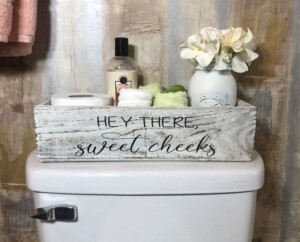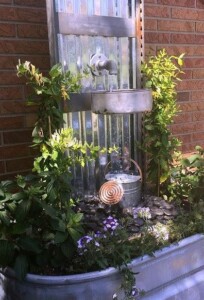In my opinion, Feng Shui remedies should be elegant or inconspicuous. What do you do if the Feng Shui remedy needs to go in an awkward location and how does that even happen?
Firstly, let’s discuss how the recommendations are determined. Part of the determination is based on when a house was built and its magnetic compass alignment. Then we divide the floor plan drawing into eight directional sectors. The energy field in each of these areas can be diagnosed and often a certain element is needed to balance the energy. An element could be an item that qualifies as water, wood, fire, earth or metal.
Sometimes an element is needed in theory, but it lands in an area that is not heavily used and we can skip it. But other times, an element needs to be placed in an awkward area that will benefit the entire house or a room that is used a lot. There are also remedies or applications, which are based on the occupants’ birth data and there is no substitute for placement in the correct location. Sometimes there is no floor space for a remedy and the ideal would be to use wall space.

I’ll share with you some examples:
Client A needs to put their vase of Romance remedy in an area of their house which just so happens to land on the toilet tank. Normally, you don’t see a vase of water on top of a toilet. But there is a creative way you can have a stable tray on the tank top and place a vase of water (flowers optional) and group it with other toiletries that make sense for the location.

Years ago I wanted to practice what I preach and apply my Peach Blossom Romance remedy (vase of water. For my birth data it ended up needing to be halfway up the stairs in order for it to be in the exact right location. I placed it where it needed to be and propped it up further with a hard cover book, to help ensure the vase of water would not get kicked accidentally, going up and down the stairs.
Likewise, some remedies need to be, due to lack of space elsewhere in the right directional zone, on top of the refrigerator, in a closet, under a bed or in a small entry. This is when we need to get very innovative, sometimes mounting a shelf on a wall when there is no floor space or furnishings to work with.
Client B has a “Form School” challenge, where there is a direct alignment of the front door with the back door or a bathroom door. The remedy may be to block or buffer that direct alignment with some décor item, and yet we don’t want to create an even more conspicuous feng shui flaw while trying to make that correction. For example, I would not recommend someone place a standing screen to block alignment between two exterior doors if this solution would make one of the areas feel congestive or dark. There are plenty of times when we have to decide if the result of the remedy would be worse than the original flaw.
Client C wants to sleep in their best personal direction, but that would mean sleeping under a low window and in alignment with the rooms’ door. This is an example of when we have to prioritize qi flow over best personal directions.
Client D finds out that if they place an outside fountain in a certain direction that it can help stimulate financial luck, but that best location ends up being on one side of the house instead of the front or back. Should this client place a fountain in an area of their property where they won’t even be able to see and appreciate the nice view of a lovely fountain? Answer: Yes!

Client E finds out that their toddler’s bedroom needs metal in it to help prevent their child from getting sick. For children’s bedrooms, the furnishings are almost always wood and we certainly don’t want to have any metal item in the room which could cause the child to get injured. This is one example where we might place a remedy behind or under another furnishing to keep it out of reach.
Client F finds out that based on their birth date, the best place to put their Lucky Money (Lu Cun) bowl ends up in their teenager’s bedroom. Aside from the fact that many teenagers proclaim their bedroom off-limits to their parents, how can we get around this limitation? This might be a case where we have to find a second choice alternative and this is an example how Feng Shui in theory is often different from Feng Shui in practice. In cases like this, we could micro-manage the home office and place the Lucky Money bowl there.
Client G happens to need water in two adjacent areas. Understandably, the client may not want two fountains in the same room. Perhaps here we can vary the water feature, such as a fountain in one zone and an aquarium in the adjacent zone. That way the client’s home won’t look like a fountain shop. Another solution might be to strategically place the water feature on the borderline between the two areas that need water so that one fountain can benefit two areas.
Client H needs water in their bedroom, but doesn’t want to hear the trickling sound of water when trying to sleep. This is an easy fix because you honestly don’t need an interior fountain to run 24/7. It could be turned off at night or even put on an automatic timer so you don’t have to think about it.
There are many more examples, but my job as a Feng Shui consultant is to make suggestions and help problem-solve for the client. This also includes situations when the client is a renter and does not have the ability to apply the ideal remedy in a place they do not own.
Author: Kartar Diamond
Company: Feng Shui Solutions ®
From the Feng Shui Architecture and Design Blog Series
